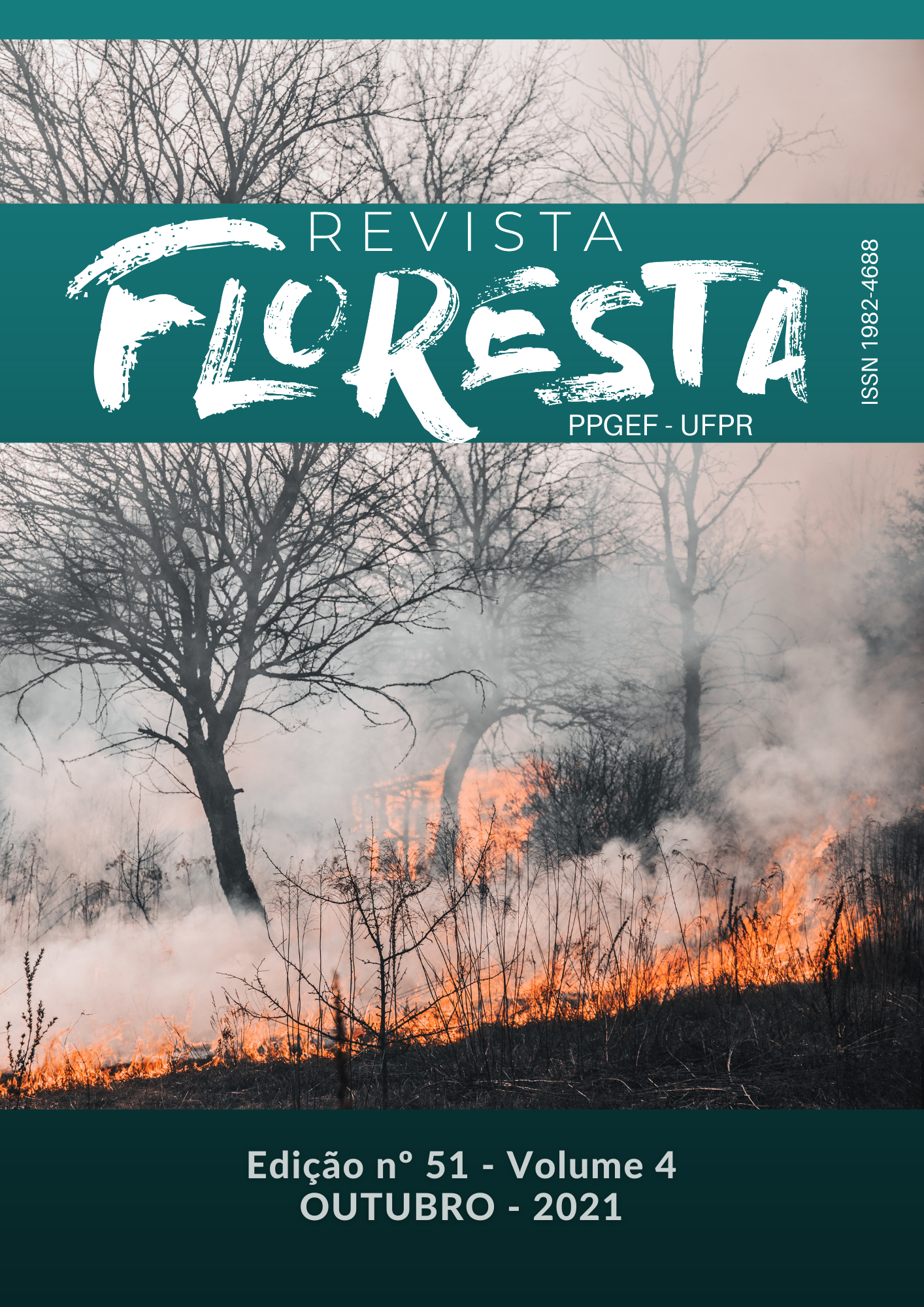BASE FERTILIZATION COMPENSATION AS A METHODOLOGY FOR COMPARISON OF CONTAINERS VOLUMES
DOI:
https://doi.org/10.5380/rf.v51i4.76200Palavras-chave:
Production of forest seedlings, slow release fertilizers, tubes, quality of seedlingsResumo
The current methodology for comparing the volumetric capacity of containers does not make it possible to differentiate the effects caused by the higher concentration of fertilizers, available by volume of container, from the real effect of the growth space and fertilization. The fertilization compensation aims to correct the effect of the concentration of fertilizers, guaranteeing the same proportion of fertilization in different volumetric capacities of containers, making it possible to be a new methodology for the production of forest seedlings. The methodological proposal was applied to the production of Handroanthus ochraceus seedlings, testing two volumetric capacities, 55 and 115 cm³, of containers, of the tube type and six doses of controlled release fertilizer, namely: 0.19; 0.24; 0.30; 0.40; 0.51, and 0.63 g / tube in a completely randomized design with four replications. The height and diameter of the collection were evaluated biweekly up to 150 days after sowing and the dry matter of the aerial and root parts. The results demonstrate that regardless of the volumetric capacity of the container, the highest doses of fertilizer resulted in greater morphological characteristics. Therefore, the effect responsible for the differential growth between the volumetric capacity of the containers, normally attributed to the greater space available for root development, is actually attributed to the greater availability of nutrients, which the fertilization compensation aims to keep constant. It was concluded that the use of basic fertilization compensation proved to be efficient for comparisons between volumetric container capacities.
Downloads
Publicado
Como Citar
Edição
Seção
Licença
Direitos Autorais para artigos publicados nesta revista são do autor, com direitos de primeira publicação para a revista. Em virtude da aparecerem nesta revista de acesso público, os artigos são de uso gratuito, com atribuições próprias, em aplicações educacionais e não-comerciais.A revista, seguindo a recomendações do movimento Acesso Aberto, proporciona acesso publico a todo o seu conteudo, seguindo o principio de que tornar gratuito o acesso a pesquisas gera um maior intrcambio global de conhecimento.
Conteúdos do periódico licenciados sob uma CC BY-NC-SA 4.0



